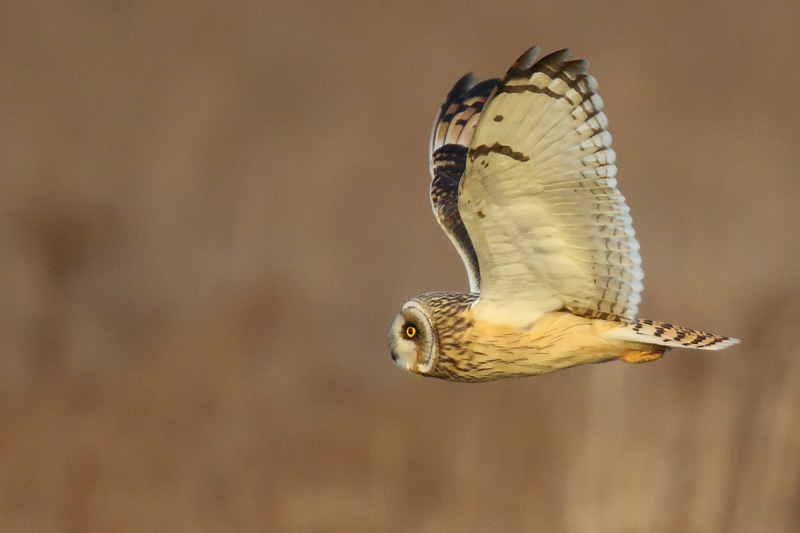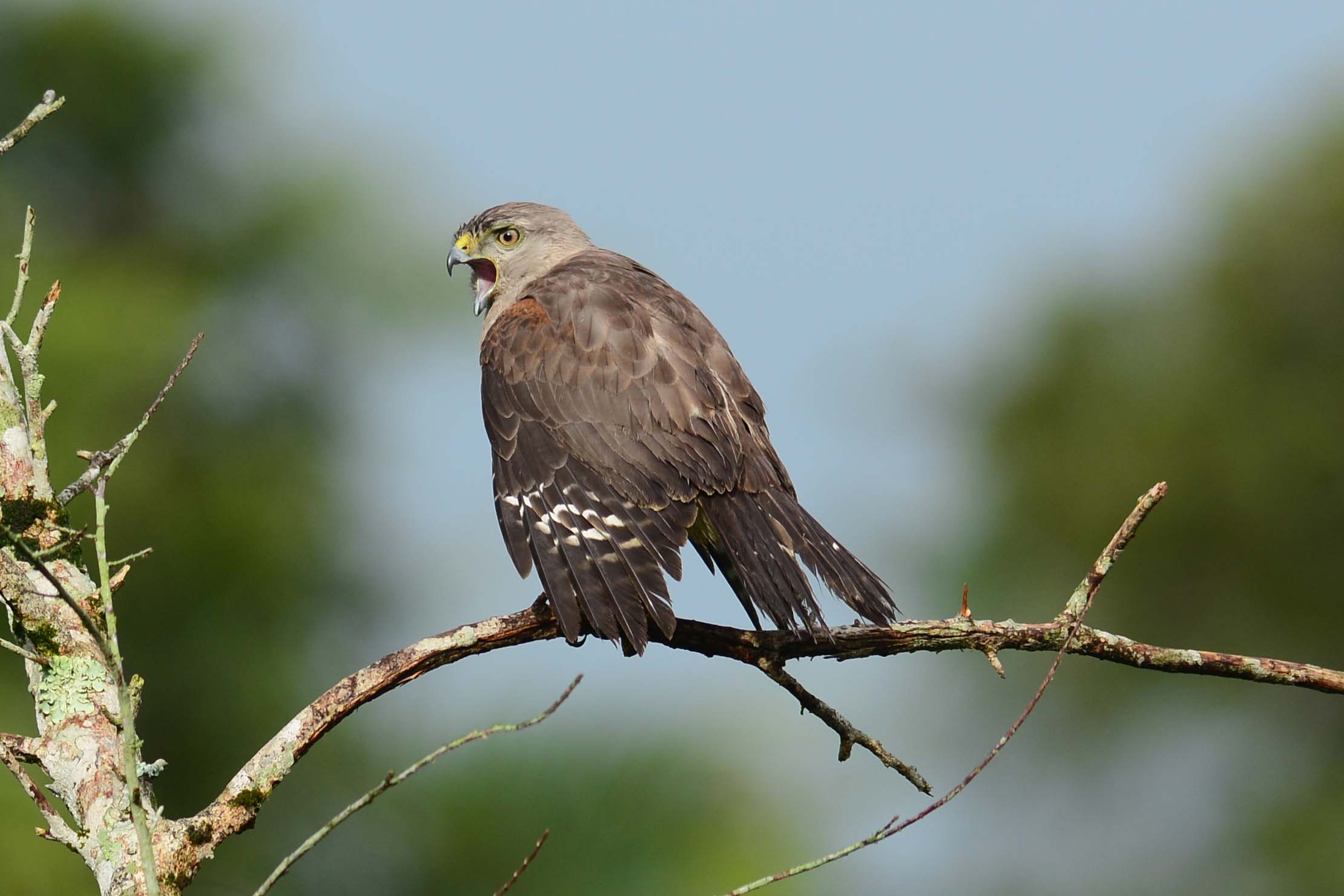Comments
N. American Stop Press Gallery
Obviously, it was the opportunity of a lifetime to see an Ivory Gull. But more importantly, it changed how I felt about the birding community and my future. Lauren LaFave
This month, we have three very different but equally inspiring rarity-finding stories. A 16 year old birder chancing upon the bird of the year for many Michigan birders; a persistent birder in BC rolling the birding roulette wheel and rediscovering a mega rarity and finally, a Wisconsin birder working through one of the tougher vagrant ID challenges.
Ivory Gull, University of Michigan, Flint, Michigan, March 9th 2017
Lauren LaFave
Being the lucky finder of the Flint Ivory Gull has changed my life for the better. Obviously, it was the opportunity of a lifetime to see an Ivory Gull. But more importantly, it changed how I felt about the birding community and my future. I've shifted from the idea of settling for an office job to fund my weekend birding excursions to hoping I can devote my whole career to birds. I was an avid birder before I came across the gull, but wasn't well integrated into any local birding groups. Thanks to this little gull though, I got the opportunity to meet a bunch of wonderful birders and am happy to call some of them my friends!
The moment I saw the gull I didn't realize what it was. I was with my friend Sophia walking between buildings on the UM Flint campus on Thursday the 9th. It was around 4:30 in the afternoon, and Sophia was on her way to the parking lot to head home. I spotted the bird and commented on its beauty, while Sophia pulled a penny out of her pocket and sent it flying toward the bird. I held my breath and vowed to never take Sophia to see birds with me ever again. Luckily, the bird wasn't spooked at all, which is more than I can say for me!
Sophia and I didn't stay near the bird for too long. I dismissed it as some kind of gull I had simply never seen before, or maybe some kind of albino. But not knowing began to eat at me. After my friend left I went back to the bird out of curiosity, and ended up staying outside for about an hour and a half (it was freezing!). During this time I played bird calls and found pictures online to compare to, and took pictures of my own. "Ivory Gull" crossed my mind immediately after looking at it for awhile. Again, I brushed it off because it was so far out of its range. When I finally returned home, I showed my blurry pictures to friends and posted it to Facebook. I also wrote the best description I could to go with it, since all I had to take pictures with was my cell phone. It was that night that the gull began to change my life.
After getting confirmation from more experienced birders that it may actually be an Ivory Gull, I went back to school as early as I could Friday morning. I searched high and low for the gull and finally found it resting on the broken dam. I whipped out my binoculars and snapped some pictures on my phone again, this time prepared enough to capture the field marks. I added these pictures to my posts online and instantly a frenzy started. It was an actual Ivory Gull. About 8:30 Friday morning was when word started to get out and when I put the gull on ebird. Around 11:00 when I went to lunch, there were 20 or so photographers by the Flint river.
Ever since Friday morning, I've had a multitude of amazing opportunities and made so many friends it's made my head spin. Multiple times throughout this last week I’ve thought life couldn't possibly get better. But new opportunities keep popping up, and I keep getting involved in more bird-related activities. This bird has launched me head-first into the world of birds and I've never been more excited.

Ivory Gull, Flint, Michigan from the Surfbirds Galleries by Norka Saldana.
Unfortunately, like the California Ross's Gull before it, the Ivory Gull was found dead a few days after its initial discovery and it skin was sent to the University of Michigan museum.
16 year old Lauren has a Bird Education Fund
Redwing, South Valley Dr, Victoria, British Columbia, February 11, 2017
Jeremy Gatten
I am going to start by rewinding the tape back to December 16, 2013. This was the date of the Victoria Christmas Bird Count, but Albertan birder Ken Orich was out birding independently from the event. While walking along a footpath that connects Wilkinson Rd to South Valley Dr, he saw a bird he didn’t recognize and managed to snap a couple photos of it. When Ken returned home, he forgot about the photos and they unfortunately were not circulated for over two and a half months. In early March, the photos were sent to Dick Cannings, a provincial bird expert, and he recognized the bird as British Columbia’s first record of Redwing. Despite the time that had lapsed since the initial sighting, Victoria birders put in a modest effort but failed to relocate the bird.
Now we can fast forward to December 19, 2015. This was the date of the Victoria Christmas Bird Count – are you having déjà vu? Local birder Nathan Hentze was participating in the count and his area included the neighbourhood the Redwing was photographed just over two years earlier. The species was firmly on his radar, but it was still a shock when the bird actually materialized. This time birders from near and far were able to enjoy this ABA Code 4 rarity for nearly four months.
Let’s roll the tape forward one last time to February 11, 2017. I got a late start to my day, but I had the remainder to do as much birding as I pleased. I decided I wanted to sift through and photograph gulls at Esquimalt Lagoon, and I intended not to deviate too much from that plan. As soon as I start driving, however, my mind began to contemplate other options. Next thing I knew, my plan included stops at Viaduct Flats for waterfowl and Spectrum Community School for gulls and geese. After scanning through the Canvasbacks at Viaduct Flats – hoping to find a Common Pochard like rarity finder Jeff Allen in California – I threw yet another curveball in my schedule and decided to see if the bird activity had changed along South Valley Dr in the last few weeks. Upon arrival at approximately noon, I stepped out of my car to assess whether it was going to be a worthwhile endeavor. Immediately I could hear American Robins calling from the brushy slope set behind some townhouses. I walked down the driveway for the townhouses to view this habitat. This was my favourite spot to search for the Redwing last year and the fact that robins were there got my Redwing senses tingling. The sun was out and it was the warmest it had felt in Victoria in weeks. The robins were actively feeding in the holly bushes and now I was feeling déjà vu – I thought to myself “This feels a lot like last year.” I carefully scanned the holly and quickly glassed any bird movement. It was only a matter of minutes before a bird slightly smaller than an American Robin darted into the lower branches of one of the partly obscured holly shrubs. I could only see the side of the underparts initially, but it looked intriguing: dark streaking set against white. A moment later the bird moved up in the holly and ended up in the open, affording me a full view of a picture perfect Redwing.
I quickly put the word out that the Redwing was back and within an hour or so I was able to share this sighting with a Seattle birder and a troop of Vancouver birders that happened to be in Victoria to search for other local rarities. We won’t have the same influx of birders from all over the ABA this year, but I’m happy to report that birders from near and far have been successful in seeing this vagrant thrush.
British Columbia has had some very exciting birds over the past five years, but a Redwing that has almost certainly returned for at least four winters is certainly sitting up near the top. I am happy to play a small role in the story of this bird with the discovery of its return in 2017!

Redwing, British Columbia from the Surfbirds Galleries by Jeremy Gatten.
Slaty-backed Gull, Northridge Lake, Milwaukee County, Wisconsin, February 13th 2017
Thomas Wood
Northridge Lake is a man-made lake near a large condominium complex in a mixed retail-residential area in Milwaukee County.
It attracts a large number of Canada Geese, and frequently large numbers of gulls which are probably resting after feeding at the huge Orchard Ridge landfill which is directly 4 miles west. Lake Michigan is 6 miles to the east and is probably the source for these gulls.
This winter, gulls were scarce at Northridge Lake, but on February 13th, I was driving past on my way to bird Lake Michigan, and I noticed that finally a large number of gulls had assembled on the ice. I did a quick scan and noticed only one dark-backed gull. I hoped for a Lesser Black-backed which I hadn't seen yet this year. When I scoped it, I noticed it was about the size of the largest Herring Gull and had deep pink legs, so it was not a Lesser Black-backed Gull.
Since it was an adult gull (clean white tail, yellow bill with a red spot at the gonys), identification was straightforward. This bird had that "glaring" look due to a concentration of streaking around the pale yellow eye on the heavily streaked head and neck. It was somewhat pot-bellied and broad chested. The apical spots and tertial crescent were large and bright white, and wing extension was moderate.
Lesser Black-backed and huge Great Black-backed Gulls were easily eliminated but an increasing number of presumed Herring X Great Black-backed hybrids have caused recent confusion for birders. Size, structure, and head streaking were studied to eliminate the hybrid.
While gathering field marks to report to our records committee, I wanted to see the upperwing. I did get a glimpse of the broad white trailing secondary bar and the huge white spot on P10, but my eyes weren't quick enough to see the white tongue-tips that form the "string-of-pearls" that are present as subterminal primary marks on this species.
After a long study and an inkling that this gull might remain, I called a local birder who is almost always out birding, and he arrived within 15 minutes. Since he had a smartphone, he was able to get the word out to others who enjoyed this unusual species and found other interesting gulls in this flock. Fortunately, one viewer is a patient and skilled photographer, and he captured the white tongue-tips on P6-P8 of the spread wing!

Slaty-backed Gull, St. John's, Newfoundland, March 2017 from the Surfbirds Galleries by Bruce Mactavish.



 The Rarity Finders; Ross's Gull, Red-flanked Bluetail and Common Pochard
The Rarity Finders; Ross's Gull, Red-flanked Bluetail and Common Pochard 2017 Birding Software Review
2017 Birding Software Review Places to Go Birding in 2017
Places to Go Birding in 2017 Four Birds You Will Never See and Four Your Great Grandkids Won't Either
Four Birds You Will Never See and Four Your Great Grandkids Won't Either 25 of the Rarest Birds in the World
25 of the Rarest Birds in the World 2016 Year Listers
2016 Year Listers Woodhouse's and California Scrub-Jay Identification
Woodhouse's and California Scrub-Jay Identification Adult Vega Gull Identification
Adult Vega Gull Identification